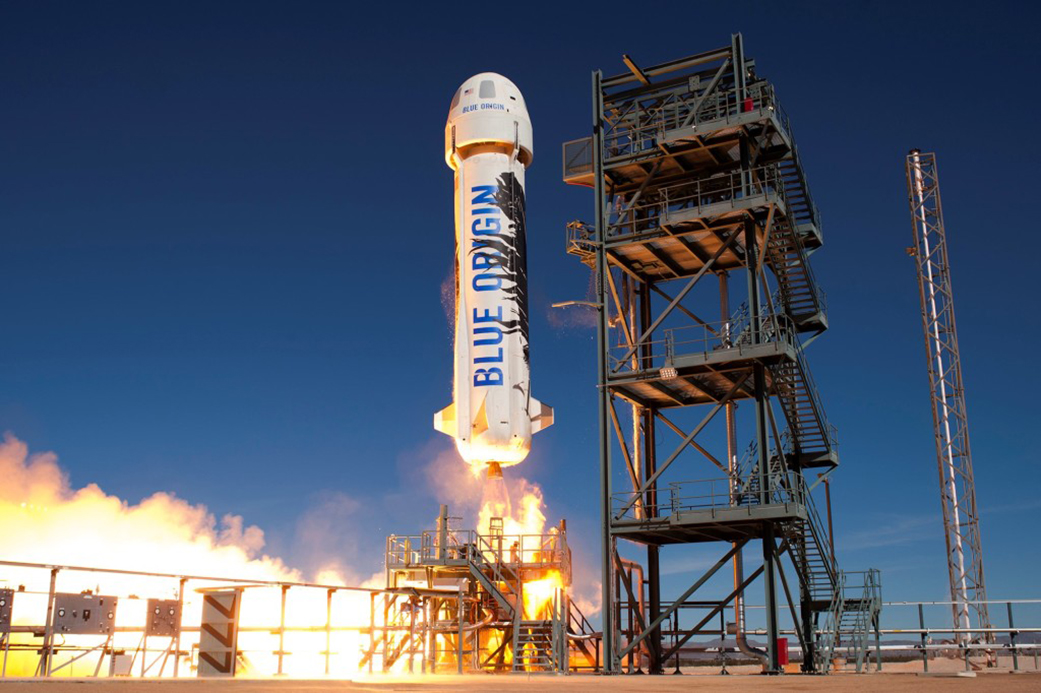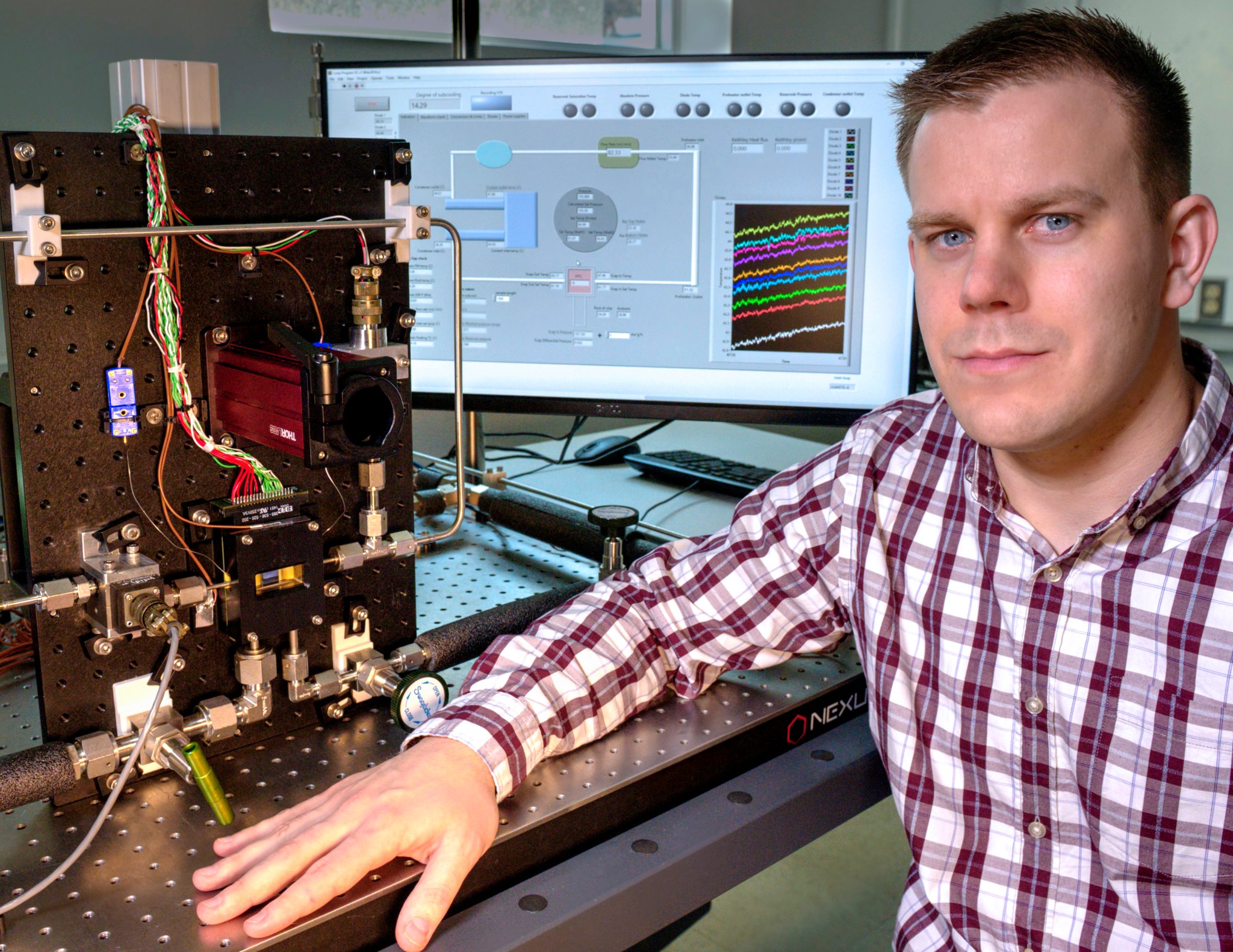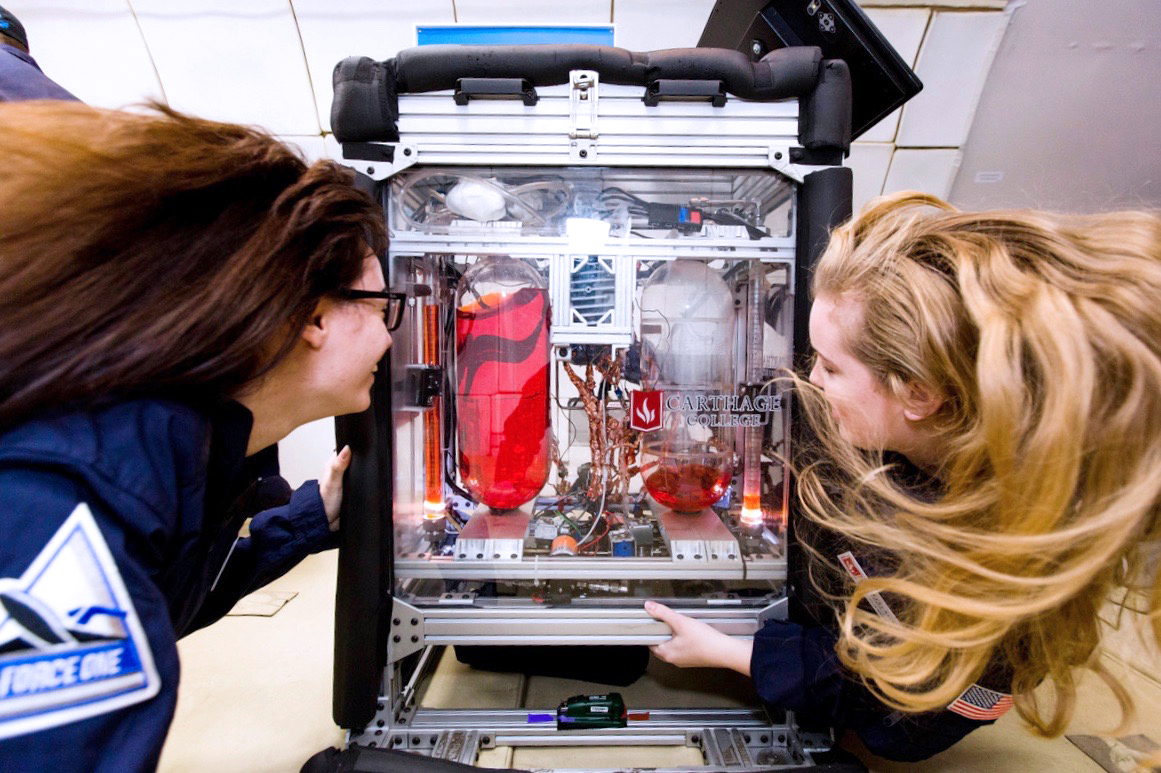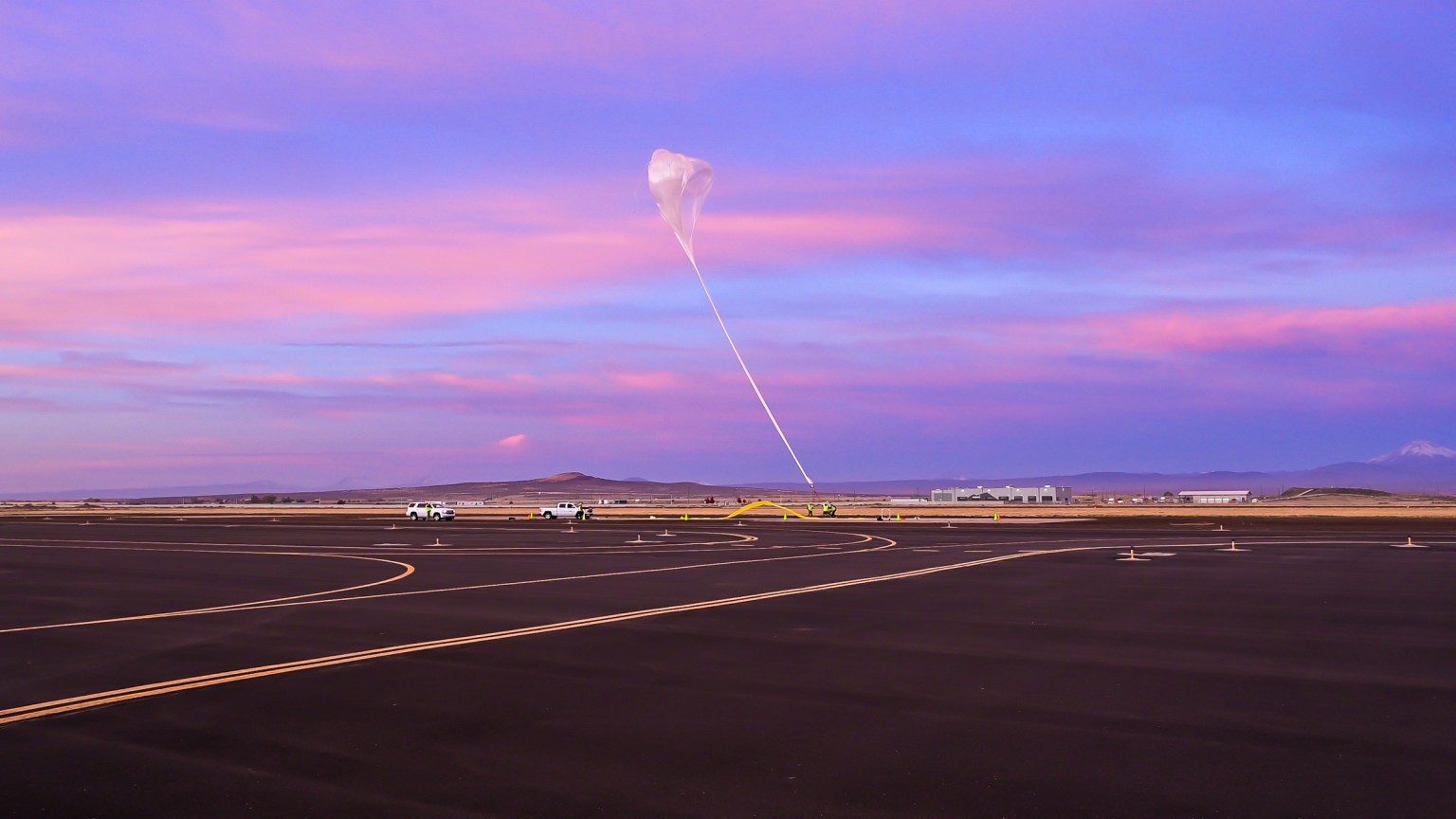Editor’s Note: Blue Origin’s New Shepard rocket successfully carried eight NASA-supported research and technology payloads to space Wednesday, Jan. 23. The Suborbital Flight Experiment Monitor-2 from NASA’s Johnson Space Center in Houston, originally scheduled for this flight, will seek opportunities to fly at a later date.
Before a NASA technology makes it to orbit or lands on another planet, researchers test – and retest – it in space-like conditions. These tests often take place on Earth, but some payloads take a trip to suborbital space for a few minutes of valuable microgravity testing.
Blue Origin’s New Shepard rocket will venture into space with nine NASA-sponsored technology payloads onboard no earlier than Dec. 18 at 8:30 a.m. CST. The company’s live launch webcast will air on NASA Television and the agency’s website.
Suborbital space is the perfect environment for researchers to test experiments, edging them closer to inclusion on future exploration and science missions. NASA’s Flight Opportunities program gives researchers this access, funding flights on Blue Origin and other commercial providers.
The New Shepard launch will mark the third suborbital flight by Blue Origin with NASA-sponsored payloads onboard and the first full mission dedicated to bringing NASA technology payloads to space. “This flight is focused on the nine technologies from government, academia and industry,” said Campaign Manager Ryan Dibley from NASA’s Armstrong Flight Research Center in Edwards, California. “NASA is thrilled to have established flight providers and partners supporting new technology development with wide applications.”
The nine payloads scheduled for the New Shepard flight are:
- Collection of Regolith Experiment (CORE)
University of Central Florida in Orlando
Missions to asteroids pose technical challenges unlike those to larger bodies. This experiment will test a dusty asteroid regolith retrieval method. CORE will measure how well the collecting technology performs in space and analyze how dust is kicked up on contact.
- Collisions into Dust Experiment (COLLIDE)
University of Central Florida
Dusty planetary surfaces complicate tasks that may be considered easy here on Earth. This experiment simulates the disturbance of dust particles in space. The data could inform architectures for future human and robotic exploration missions to the Moon, Mars and beyond. COLLIDE also flew Dec. 13 on Virgin Galactic’s rocket-powered winged spacecraft.
- Electromagnetic Field Measurements
Johns Hopkins University in Baltimore, Maryland
Modified commercial off the shelf technologies will characterize the electromagnetic field inside and around New Shepard during flight. The demonstration aims to optimize the sensor suite for suborbital vehicles in order to routinely profile the electric field of Earth’s atmosphere. This data can be used to study the role of aerosols, cosmic rays and more in the atmosphere.
- Flow Boiling in Micrograp Coolers – Embedded Thermal Management for Space Applications
NASA’s Goddard Space Flight Center in Greenbelt, Maryland
Flow boiling in microgap coolers is a thermal management technology with potential exploration applications, including power generation systems, 3D integrated circuits and more. Power generation systems are important for a sustained presence on the Moon or Mars and 3D integrated circuits are a key enabler for autonomous robots with artificial intelligence.
- Microgravity Propellant Gauging Using Modal Analysis
Carthage College in Kenosha, Wisconsin
Spacecraft, like cars, have fuel gauges. However, gauging the amount of fuel remaining is a challenge when it is floating around inside a tank in space. This technology is new technique for measuring the mass of liquid in a propellant tank. It hopes to improve low-gravity fuel mass gauging for future crewed missions to the Moon and Mars.
- Suborbital Flight Experiment Monitor-2 (SFEM-2)
NASA’s Johnson Space Center in Houston
This instrument is designed to characterize the environment inside a vehicle, including acceleration, cabin temperature, pressure, carbon dioxide and acoustic measurements. Multiple suborbital flights provide testing of sensors that could be used on crewed spacecraft.
- Validating Telemetric Imaging Hardware for Crew-Assisted and Crew-Autonomous Biological Imaging in Suborbital Applications
University of Florida in Gainesville
This experiment, which was also onboard the Dec. 13 Virgin Galactic flight, studies how microgravity affects plants. It uses a biological fluorescent imaging instrument to collect data on the biological response of a plant, or plant tissue. Initially developed for experimentation on the space shuttle and International Space Station, the experiment has broad applications for both space and biological sciences.
- Vibration Isolation Platform (VIP)
Controlled Dynamics Inc. in Huntington Beach, California
Spacecraft and payloads are subject to intense launch environments. This mounting interface for orbital and suborbital vehicles is designed to lessen disturbances during flight. During launch, re-entry and landing a payload is mechanically secured to the vehicle. Once in microgravity, it’s automatically released on a free-floating platform. The technology was also tested on the Dec. 13 Virgin Galactic flight.
- Zero-Gravity Green Propellant Management Technology
Purdue University in West Lafayette, Indiana
This experiment will mature technology to control nontoxic green fuels in spacecraft propellant tanks. This technology complements NASA’s Green Propellant Infusion Mission and could benefit future missions to near and deep space.
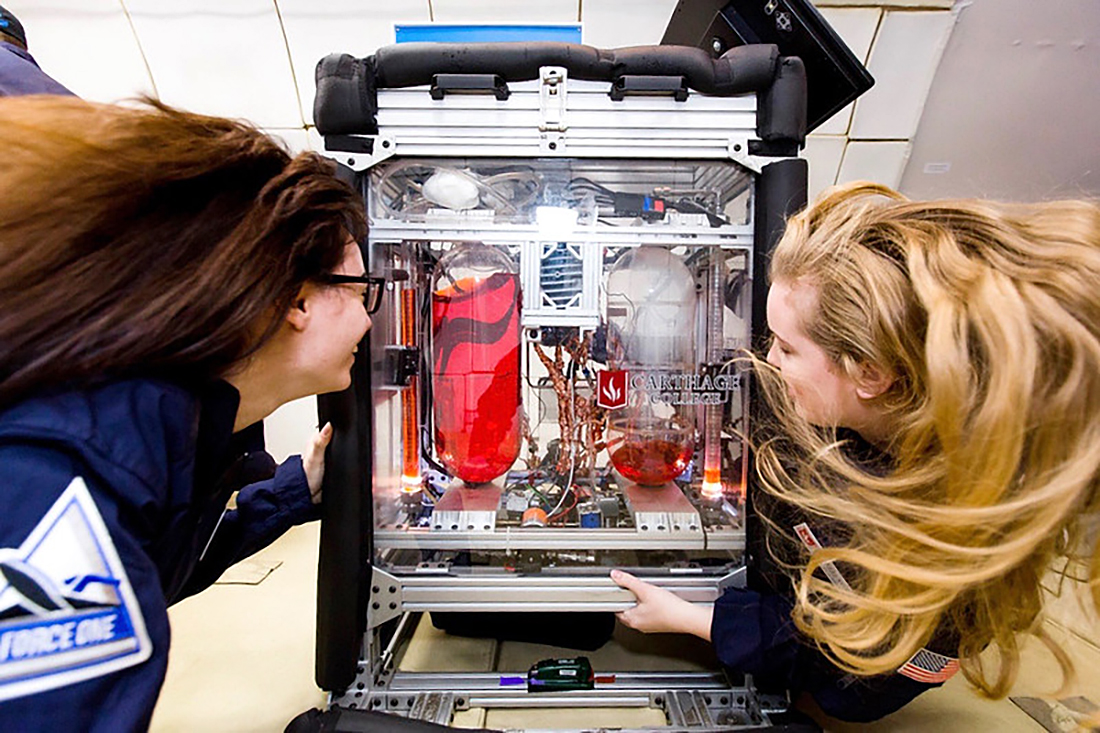
Many of the technologies have been tested in space one or more times. “Most of the payloads have flown on a different vehicle or another Blue Origin flight profile,” said Dibley. The new data may reveal refinements to lower risk and ultimately propel technology maturation, he explained.
This is SFEM-2’s third flight with Blue Origin. “The opportunity to re-fly our payload is helping us not only validate and compare data for different flight profiles, but also test modifications and upgrades,” said Kathryn Hurlbert, principal investigator for SFEM-2 at Johnson. “In the very challenging task of flying things in space, it has been said – and I continue to believe – that ‘you are done with testing when you can’t think of anything else to test.’”
Earlier tests on other platforms, such as parabolic flights, enabled some research teams to justify the benefit of testing their payload on a suborbital rocket. For two of the nine technology experiments, this marks their first flight.
About Flight Opportunities
The Flight Opportunities program is funded by NASA’s Space Technology Mission Directorate at the agency’s Headquarters in Washington and managed at NASA’s Armstrong Flight Research Center in Edwards, California. NASA’s Ames Research Center in California’s Silicon Valley manages the solicitation and evaluation of technologies to be tested and demonstrated on commercial flight vehicles.
Blue Origin and other U.S. commercial spaceflight providers are contracted to provide flight services to NASA for flight testing and technology demonstration. Researchers from academia and industry with concepts for exploration, commercial space applications or other space utilization technologies of potential interest to NASA can receive grants from the Flight Opportunities program to purchase suborbital flights from these and other U.S. commercial spaceflight providers. The next solicitation for potential payloads is anticipated for release in January 2019. For information about current opportunities, visit: https://www.nasa.gov/directorates/spacetech/flightopportunities/opportunities
Clare Skelly
Headquarters, Washington
202-358-4273
clare.a.skelly@nasa.gov
Leslie Williams
Armstrong Flight Research Center, Edwards, Calif.
661-276-3893
leslie.a.williams@nasa.gov



























